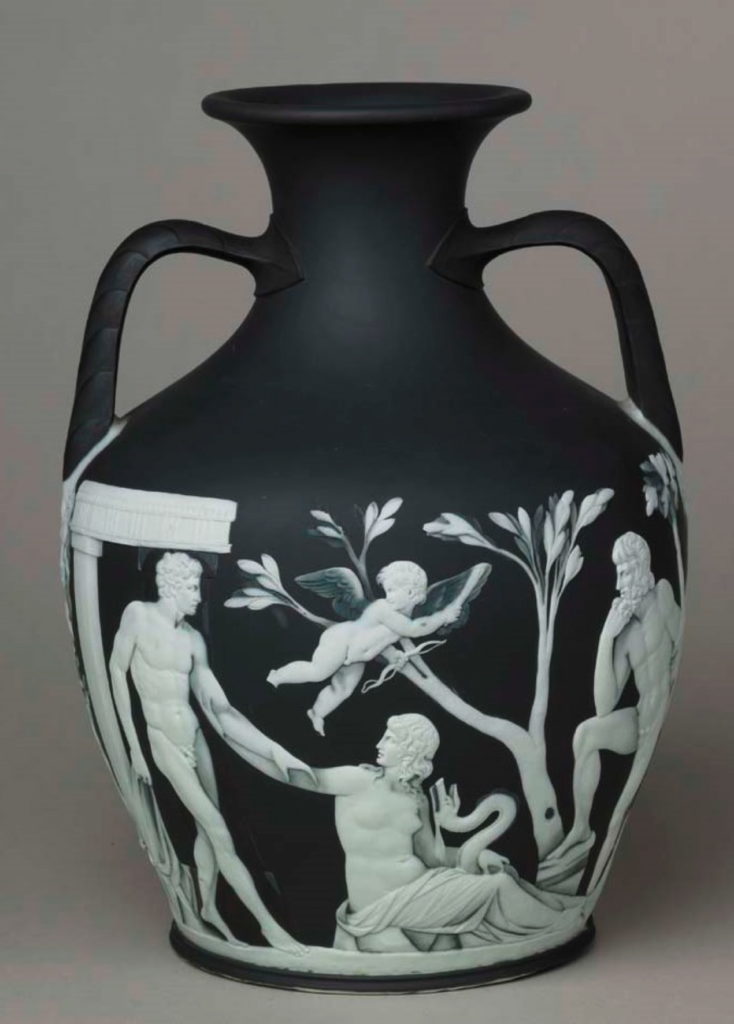The original Portland vase is a Roman glass vessel and has long been an object greatly admired by lovers of antiquity and art. It was probably made in the 1st century AD and the scenes on the vase are of love and marriage, with a mythological theme, which is why it is thought to have been given as a wedding gift. It originally had a lid and a long, cone-shaped base, but this had been broken at some point and replaced with a more practical flat piece of glass, from another vase.
The glass vase is held at the British Museum. It has had several restorations over the years after an incident in 1845, when a drunken gentleman called William Lloyd threw a sculpture at the case the vase was in and broke it into hundreds of pieces.
First recorded around 1600AD in Italy, its whereabouts before are not known, nor indeed is where it was actually found. It was formerly called the Barberini vase after the Italian noble family that first owned it after its discovery. It was eventually acquired by Sir William Hamilton – a British ambassador in Italy and amateur archaeologist – who brought it to England in 1783 and sold it to Margaret Cavendish-Harley, the Duchess of Portland, which is how it got its current name.

The Staffordshire potter Josiah Wedgwood was told of the pot’s beauty by one of his workers, the ceramic artist John Flaxman. He wrote to Wedgwood saying: “It is the finest production of Art that has been brought to England and seems to be the very apex of perfection to which you are endeavouring.”
Wedgwood was always looking for unique items of beauty to copy in a ceramic form and he eventually got his hands on it in 1786, after the son of the Duchess of Portland lent it to him to copy. He tried making copies of it in his famed jasperware – a hard, smooth ceramic body. But he struggled to get a good copy and took nearly four years to get it right. He saw this trial and error not as failure but as research and design, and it is testimony to his drive and desire to get the copy right.
It was the first time in the ceramics world that limited editions were produced. To own one, you had to pay a £50 subscription beforehand – the equivalent of about £5,000 today.
It’s thought only between 20 and 50 were ever made and National Museums Liverpool is proud to own three original vases – two of which are on display in the Lady Lever Art Gallery.
The first satisfactory copy was given by Wedgwood to one of his closest friends, Erasmus Darwin, grandfather of Charles Darwin.
Copies of the Portland Vase are still made today. It takes an expert ceramic artist around two hours of highly concentrated effort to shape a 14lb piece of jasper clay into the distinctive shape. The figure making and decorating takes another two days and the firing takes 30 hours. Modern versions sell for £ 5000, or £20,000 if you have the whole thing gilded in gold leaf.
Like the Big Issue North on Facebook




Leave a reply
Your email address will not be published.